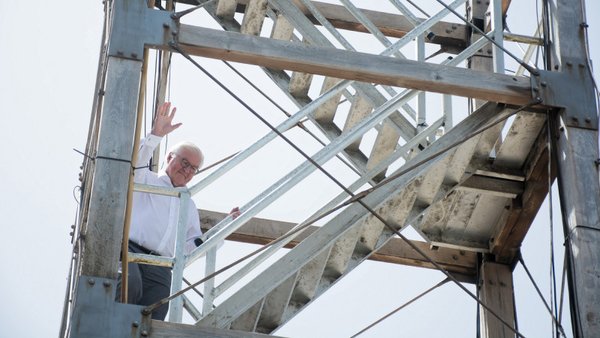
As with the ATTO tower in the Amazon, the Federal President was keen to climb high at the CVAO in order to experience the research on site. Both towers are important observation stations in the tropics. Photo: Edson Silva Delgado, GEOMAR
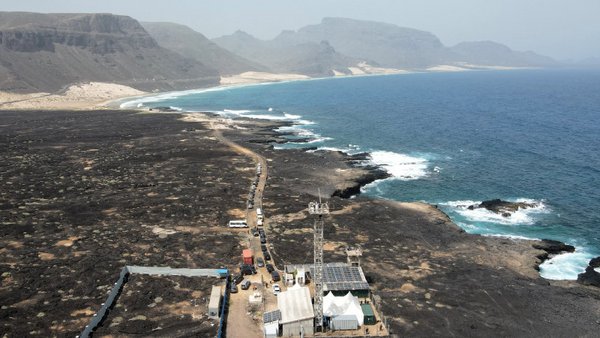
Cabo Verde in the tropical Atlantic has developed into an international hotspot for climate research in recent years. The observatory is located on a cliff on the north-eastern tip of the island of São Vicente and provides a good reflection of the atmospheric situation on the Atlantic. Photo: Edson Silva Delgado, GEOMAR
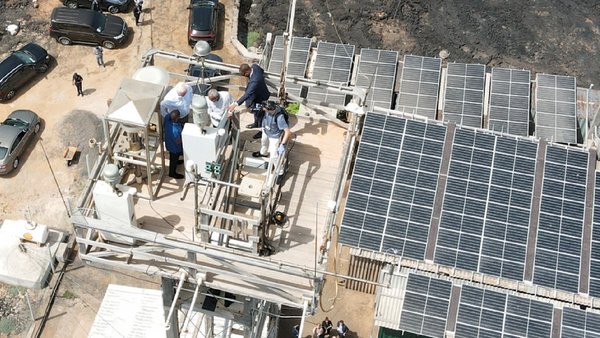
Both presidents climbed the 30 meter high tower, which was built in 2010 with funds from the Leibniz Association under the leadership of TROPOS together with the Max Planck Institute for Biogeochemistry and is the core of the observatory. Photo: Edson Silva Delgado, GEOMAR

During his visit, the President of the Republic of Cabo Verde José Maria Neves found out about joint research projects between the two countries, such as the Leibniz project DUSTRISK, which was presented by TROPOS scientist Khanneh Wadinga Fomba. Photo: Edson Silva Delgado, GEOMAR

TROPOS director Andreas Macke explained to the visitors the importance of the observatory for international networks such as the “Global Atmosphere Watch” (GAW) of the World Meteorological Organization (WMO) and the European network ACTRIS (Aerosol, Clouds and Trace Gases Research Infrastructure). Photo: Edson Silva Delgado, GEOMAR
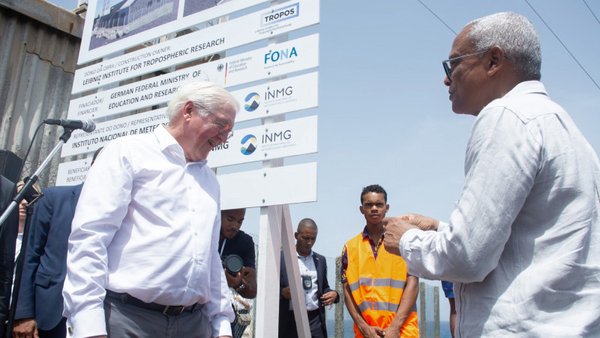
The highlight of the visit was a joint laying of the foundation stone for an expansion of the observatory, which the Federal Ministry of Education and Research is funding with over 3 million euros as part of the German contribution ACTRIS-D. Photo: Edson Silva Delgado, GEOMAR
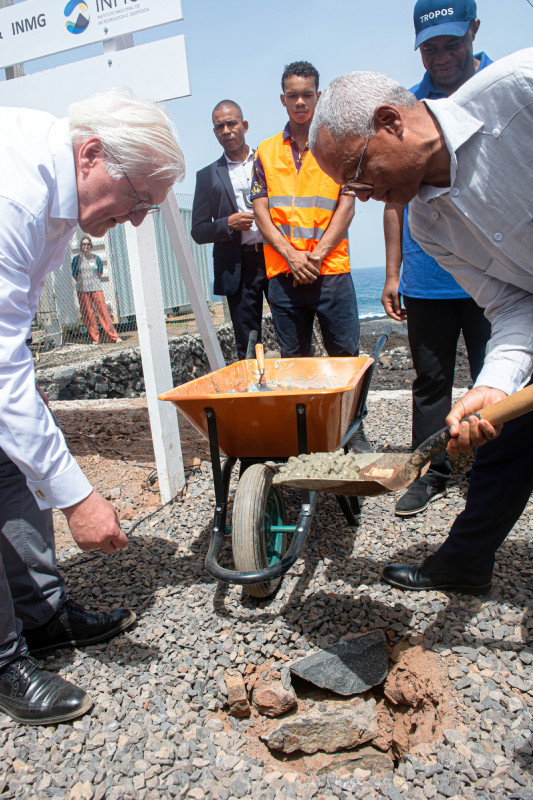
The President of the Republic of Cabo Verde José Maria Neves and Federal President Frank-Walter Steinmeier laid the foundation stone on Thursday for a new laboratory building for the Cabo Verde Atmospheric Observatory (CVAO) on São Vicente, one of the Cape Verde Islands off Africa. (from right to left) Photo: Edson Silva Delgado, GEOMAR
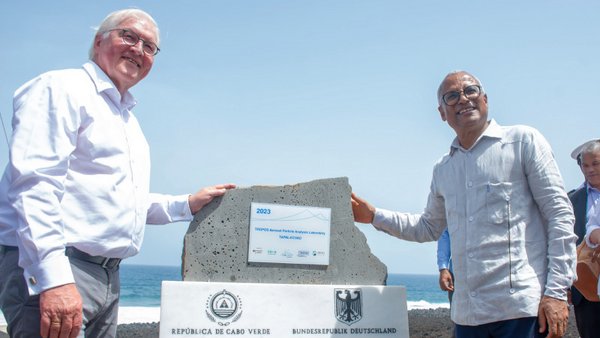
To commemorate the laying of the foundation stone for the new laboratory building, Federal President Frank-Walter Steinmeier and the President of the Republic of Cabo Verde José Maria Neves unveiled a memorial plaque. (from left to right) Photo: Edson Silva Delgado, GEOMAR
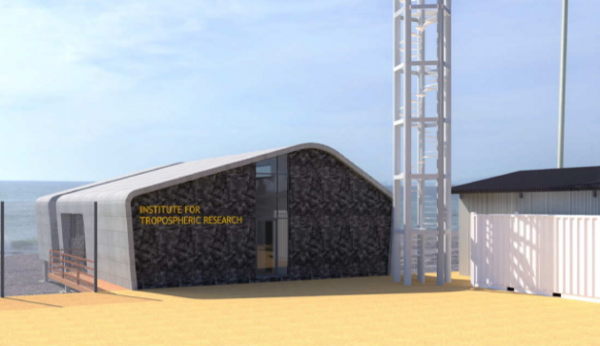
Design of the new laboratory building that will house the research activities of TROPOS and the MPI-BGC at CVAO (facade view). Graphic: Evandro Matos Arquitectos (EMA)
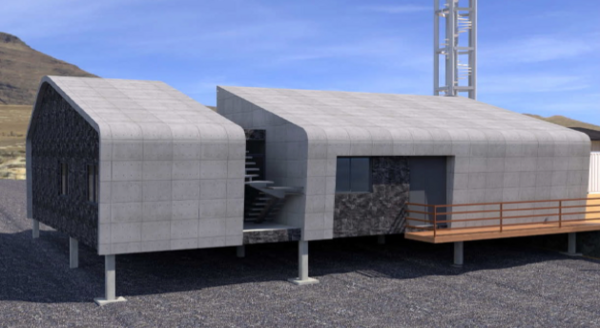
Das neue Laborgebäude „TROPOS Aerosol Particle Analysis Laboratory” (TAPAL) entsteht im Rahmen von ACTRIS-D und wird vom BMBF gefördert (Nordost-Seitenansicht). Grafik: Evandro Matos Arquitectos (EMA)

The two presidents then visited the Ocean Science Center Mindelo (OSCM), which is operated by the German GEOMAR Helmholtz Center for Ocean Research Kiel together with the Cape Verdean Instituto do Mar, and inaugurated a new TROPOS measuring station on the roof for remote sensing of the atmosphere. Photo: Edson Silva Delgado, GEOMAR

Federal President Steinmeier symbolically put the new remote sensing station into operation. It is part of the German contribution to the European research infrastructure ACTRIS (Aerosol, Clouds and Trace Gases Research Infrastructure). Photo: Rico Hengst, TROPOS
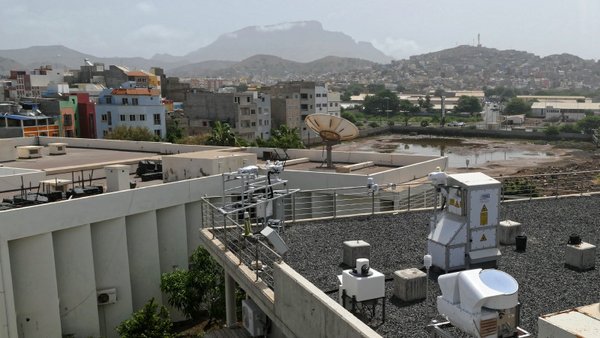
The new remote sensing station at OSCM also plays an important role in the validation of satellites such as the ESA wind satellite Aeolus or the EarthCARE mission planned from 2024. Photo: Rico Hengst, TROPOS

Globally distributed measurements, such as here with a solar photometer from Aeronet in the port of Mindelo, help to record changes in the energy balance of the earth's atmosphere. Photo: Rico Hengst, TROPOS
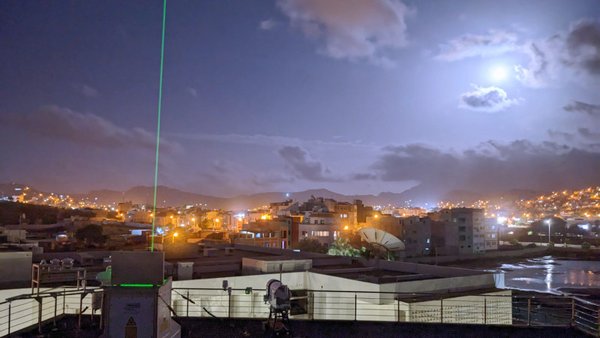
The green laser beam from the TROPOS lidar on the OSCM is now part of the night sky of the port of Mindelo. Archive photo: Rico Hengst, TROPOS
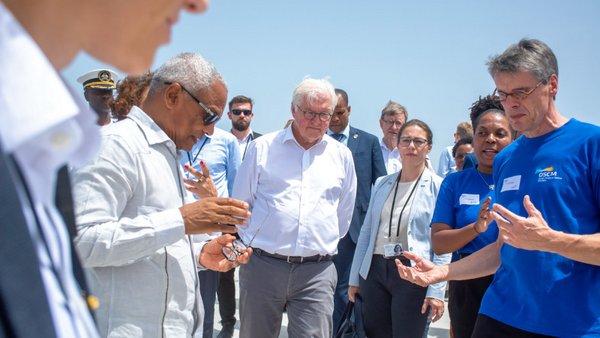
Arne Körtzinger, scientific director of the OSCM and coordinator of FUTURO, informed the presidents of Cabo Verde and Germany about the intensive marine science cooperation that has linked the GEOMAR Helmholtz Center for Ocean Research Kiel with Cabo Verde for almost 20 years. Photo: Edson Silva Delgado, GEOMAR
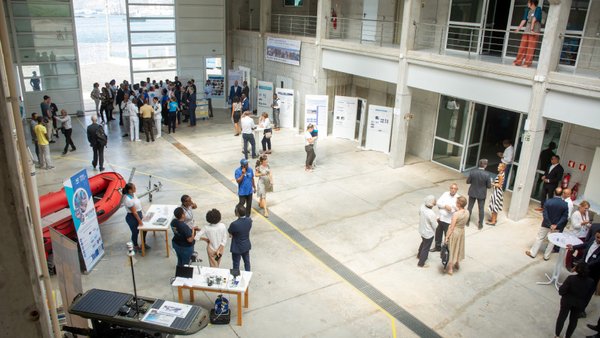
With the Cape Verde Ocean Observatory (CVOO), the Ocean Science Center Mindelo (OSCM) also operates an important climate observatory. The center in the port of Mindelo on the Cape Verde island of São Vincente has developed into a hub for international marine research since 2017. Photo: Edson Silva Delgado, GEOMAR

At the OSCM, both presidents also met with students from the “Climate Change and Marine Sciences” master’s program. This study program for young people from eleven West African countries is funded by the Federal Ministry of Education and Research (BMBF) as part of the West African Science Service Center on Climate Change and Adapted Land Use (WASCAL). Photo: Edson Silva Delgado, GEOMAR
